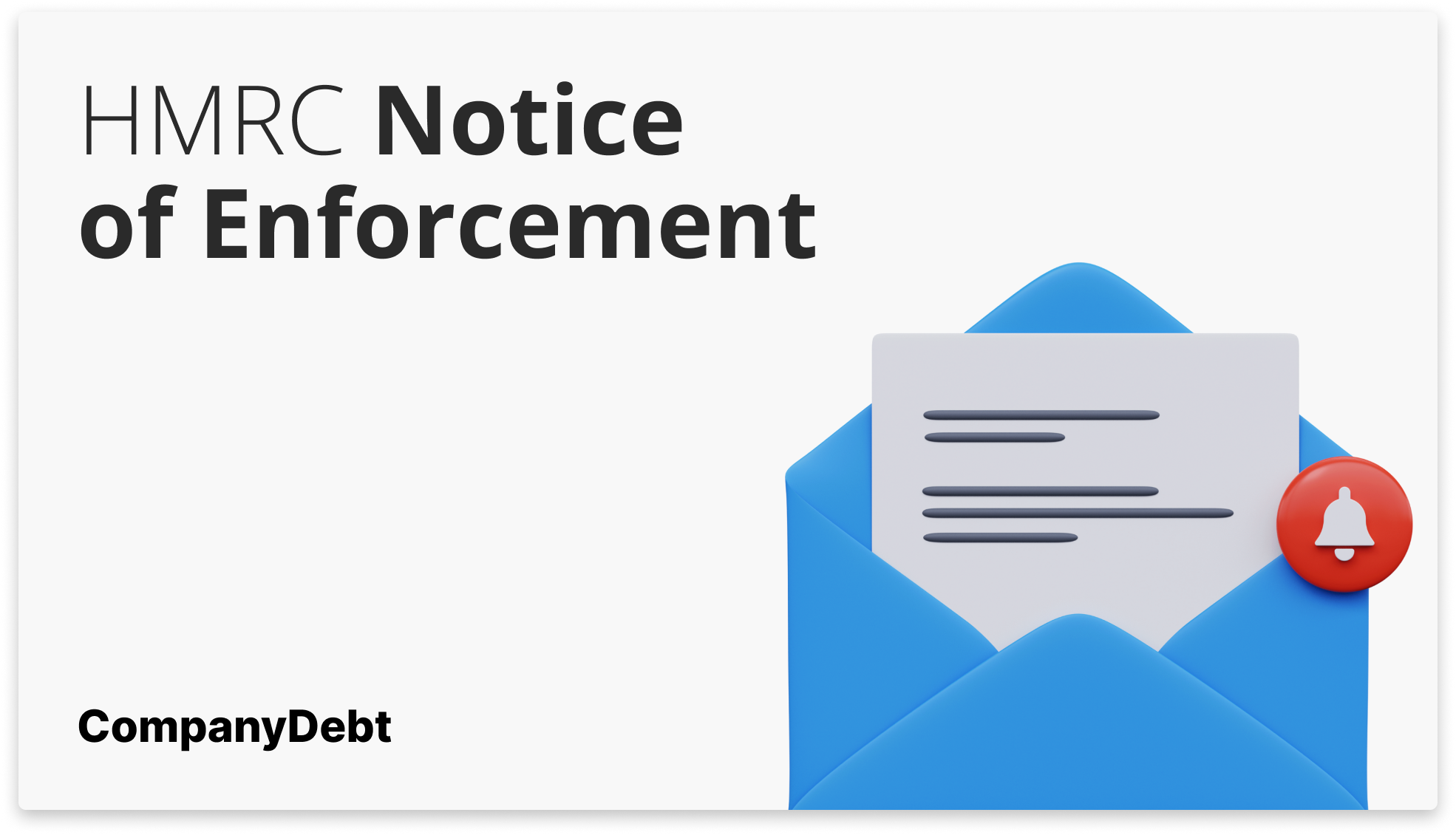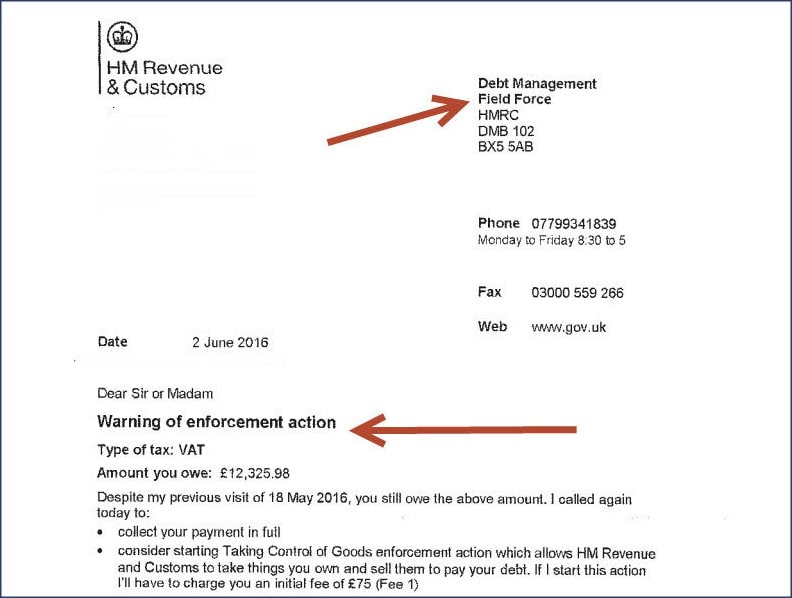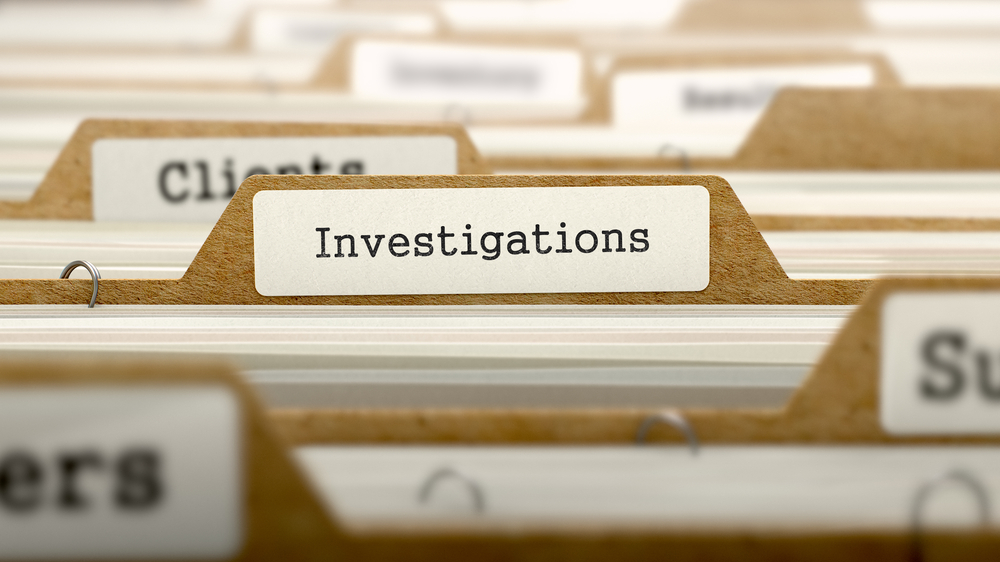
HMRC Notice of Enforcement
If you’re a director who has just received an HMRC Notice of Enforcement, it’s essential to understand its significance and the immediate actions required. This notice indicates that HMRC is taking serious steps to recover unpaid taxes or address compliance issues within your business.
The implications can be far-reaching, potentially leading to serious financial consequences or even the winding up of your company.
This guide aims to help you navigate through the complexities of the HMRC enforcement process.

What is a Notice of Enforcement?
An HMRC Notice of Enforcement is a formal document issued by Her Majesty’s Revenue and Customs (HMRC) to a taxpayer who owes unpaid taxes. It is a warning that HMRC intends to take enforcement action to recover the debt.
HMRC can issue a Notice of Enforcement without having to obtain a court order. This is because HMRC has special powers to collect taxes, including the power to seize goods and assets.
Once a taxpayer has received a Notice of Enforcement, they have two options:
- Pay the debt in full.
- Negotiate a Time to Pay (TTP) arrangement with HMRC. A TTP arrangement allows the taxpayer to pay off the debt in instalments over a period of time.

Understanding Your HMRC Notice of Enforcement
A Notice of Enforcement will contain the following information:
- Recipient Details: Your name and address, ensuring the notice is directed to the correct individual or company.
- HMRC Reference Number: A unique identifier for your case, crucial for any communication with HMRC about the notice.
- Outstanding Amount: The total tax owed, including any penalties or interest accrued.
- Reason for Enforcement: A clear explanation of why the notice is issued, whether for unpaid taxes or non-compliance issues.
- Deadline for Payment: A specific date by which the outstanding amount must be paid to avoid further enforcement action.
- Consequences of Non-Payment: Details of potential actions HMRC may take if the debt is not settled, such as asset seizure or court proceedings.
- Payment Options: Information on how to pay, including different methods and relevant account details.
- Contact Information: Details of how to get in touch with HMRC for queries or to discuss payment arrangements.
- Appeal Process: Information on how to challenge the notice if you believe it is incorrect.
Understanding these components helps directors to respond appropriately and take necessary actions to resolve the situation.
Steps to Take Upon Receiving a Notice of Enforcement
If you, as a director, receive an HMRC Notice of Enforcement, it is important to act immediately and decisively:
- Immediate Review of the Notice: Start by thoroughly reading the notice. Pay close attention to the amount owed, the reason for enforcement, and the deadline for payment.
- Accuracy Check: Confirm the accuracy of the information provided in the notice. This includes the tax liabilities, periods in question, and personal or business details. Mistakes can occur, and it’s essential to identify them early in the process.
- Financial Assessment: Evaluate your company’s financial capacity to pay the debt. Consider whether you can pay the entire amount by the specified deadline or if alternative arrangements are necessary.
- Engaging with HMRC: Promptly contact HMRC if there are discrepancies or if you need further clarification. This contact is also crucial if you’re unable to pay the full amount and need to discuss payment options.
- Seek Professional Advice: If the situation is complex, or if you’re unsure about your next steps, seek advice from a tax advisor or accountant.
- Exploring Payment Solutions: If you’re able to pay the debt in full, follow the instructions provided to settle it before the deadline. If full payment isn’t feasible, discuss payment plans with HMRC at the earliest. Time to Pay arrangements might be an option, allowing you to clear the debt in instalments.
- Documentation and Record Keeping: Maintain a detailed record of all communications with HMRC, including emails, letters, and notes from phone conversations. This documentation will be crucial if there are any disputes or further proceedings.
What is the HMRC Enforcement Procedure?
When HMRC enforces tax laws and seeks to collect outstanding taxes, their procedure involves several stages.
Following the issuance of the enforcement notice, HMRC allows a short compliance period, usually around 14 days, for the taxpayer to settle the debt or arrange a payment plan. Failing this, HMRC may escalate to taking control of goods, where they visit the taxpayer’s premises to list and potentially seize assets to the value of the debt.
If the debt is still not recovered, these assets can be sold at public auction. In cases where these measures are insufficient, HMRC may pursue further legal actions, such as court proceedings. For significant debts, bankruptcy or company insolvency proceedings might be initiated.
Throughout this process, HMRC’s preference is to engage with the taxpayer to find a resolution, often favouring payment arrangements over enforcement actions. It’s crucial for those involved, particularly directors, to respond promptly to HMRC communications and to consider seeking professional advice if necessary.
What are HMRC’s Enforcement Powers?
The various parties have different rights, so it’s important you establish exactly who has visited your premises. An HMRC Enforcement Officer will carry an identity card, so make sure you ask to see it and note down the details.
Can HMRC Agents Force Entry?
They have the right to force entry into your commercial premises if they have been authorised by a Justice of the Peace. If your premises are part residential as well as commercial, they can only enter the property by normal routes and during specific times.
You should always validate the identity of anyone purporting to work for HMRC by asking to see their photo ID, make a note of it, and calling 0300 200 3862 to check it is genuine.[1]Trusted Source – .GOV- Debt collection: confirm the identity of HMRC staff
At this point in the enforcement action, it is still possible to negotiate with HMRC officers. They will issue you with the enforcement notice, which gives you seven days to pay the debt. If you cannot repay the debt in full, you may be able to negotiate a Time to Pay arrangement at this time. If you stick to these arrangements, action to seize goods from your premises will cease.
It might be that the enforcement notice is not delivered in person. It is still binding if it is sent in the post, by fax or even via email. Alternatively, it could be attached to the outside of the building if you’re out when the officers arrive.
See our full article on this here.
How to Challenge an HMRC Notice of Enforcement
Challenging an HMRC Notice of Enforcement is possible if you think there’s been a mistake with your tax details. First, carefully review the notice to understand why you received it and check for any errors in the amount you owe or the tax periods mentioned.
Next, collect any relevant documents like tax returns or past communications with HMRC to support your case. It’s a good idea to get advice from a tax advisor or solicitor who knows about tax laws. They can help you understand if your challenge is valid and how to approach it.
Then, contact HMRC using the details in the notice. Explain why you think the notice is wrong and show them your evidence. If talking to HMRC doesn’t solve the issue, you might need to formally appeal by writing to HMRC and including your evidence. Sometimes, using an independent mediator through Alternative Dispute Resolution can help resolve the issue without going to court.
If these steps don’t work, your last option is to take your case to a tax tribunal, an independent group that will review your case and make a decision. It’s important to act quickly and keep communicating with HMRC throughout this process. Ignoring the notice or waiting too long to respond can lead to more enforcement actions and make things more complicated.
Have You Been Sent a Notice of Enforcement?
HMRC does not have to go through the courts to seize goods to collect money they are owed. For this reason, you should always act quickly if you are threatened with enforcement action. HMRC has been known to target the wrong businesses and make other administrative mistakes, so you should check all the details on the enforcement notice one it’s served.
At Company Debt we can help you check the details of the enforcement notice and provide expert assistance to help you negotiate a deal. If you have received or been threatened with an HMRC enforcement notice, please call our free directors’ helpline today for a free consultation – no strings attached.
The primary sources for this article are listed below, including the relevant laws and Acts which provide their legal basis.
You can learn more about our standards for producing accurate, unbiased content in our editorial policy here.
- Trusted Source – .GOV- Debt collection: confirm the identity of HMRC staff










